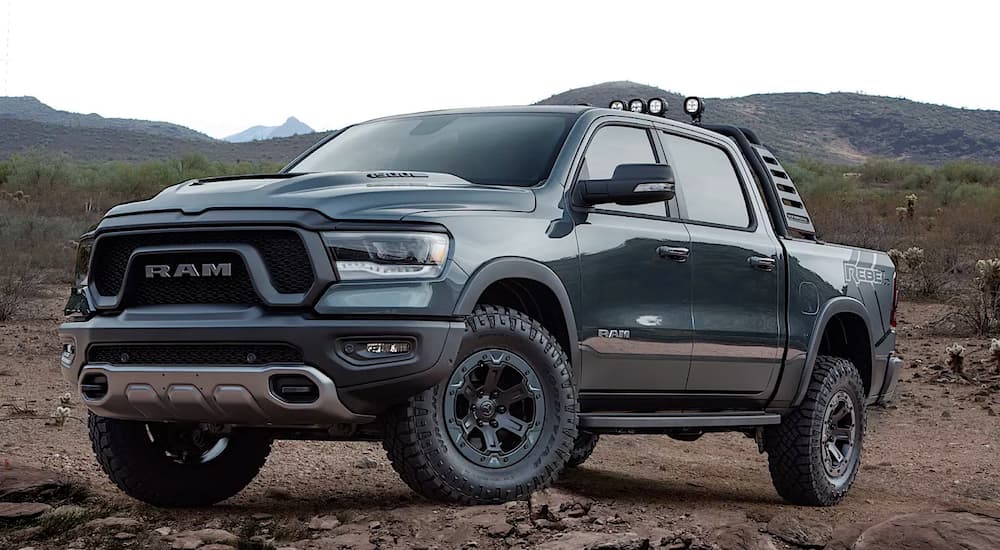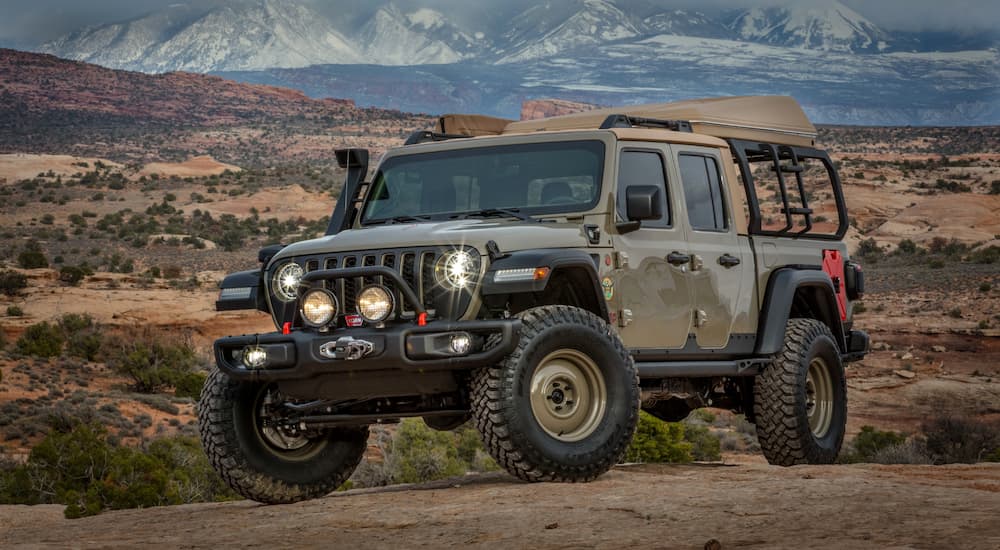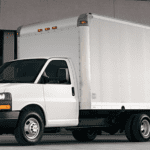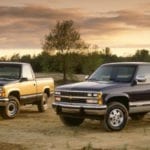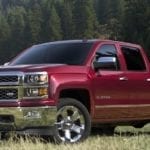You’ve seen the big ol’ monster trucks on TV, laying waste to everything they drive over. Well, if you’re looking to get your truck higher off the ground but not quite that much, installing a lift kit might be the answer. A big lifted truck looks rugged and will surely turn some heads, but there are good practical applications to lifting truck aside from making it look good. Have you given thought to why lifting a truck’s suspension is necessary or desirable? There are both pros and cons to this modification to consider, and there are things to know before getting started. Let’s take a look at a few.
It’s Not Just About Looking Cool
While many people do lift their trucks strictly for appearance’s sake, the main reason to do it is to increase ground clearance and to get the body, frame, and differentials higher. This additional clearance requires installing larger tires and in order to do that, you need to get everything up off the ground more.
If you’re using your truck for primarily city or highway driving, then there is no real benefit to more ground clearance. In fact, it may hurt performance. However, lifting provides many advantages for off-road use, including greater approach, breakover, and departure angles. The taller tires get the differential higher off the ground, reducing the risk of damage from obstacles, and all four wheels gain maximum traction due to the lifted suspension.
Having larger tires will also make it so that rough areas in the trail will have less effect on your off-road ride. They are built to flex more around obstacles, which in turn allows for more tire to contact the ground when tackling more gnarly terrain.
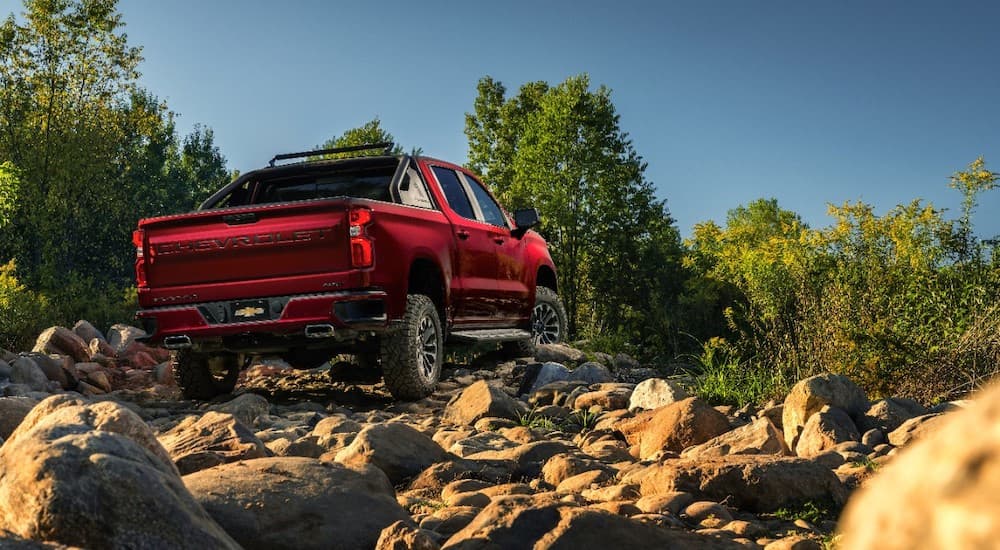
Since you’ll now be sitting up so much higher, visibility is also greatly improved. You’ll now be able to see further down the road and over other vehicles. This increased visibility not only makes it easier to see what’s going on around you but now you’ll be standing out more to others. This can all add up to a reduced chance of mishaps or accidents.
Additionally, if you’re towing a heavy load, a lifted suspension provides the benefit of having more room to settle before the weight of the load bottoms out.
Finally, if you live in an area of the country that receives lots of snow, a lifted truck and higher clearance is certainly going to be beneficial for getting through those harsh winter storms. With the addition of a plow, you’ve now got the opportunity for a nice little side gig plowing out your neighbors’ driveways, area parking lots and local businesses. If you can earn enough from plowing, that might end of paying for the cost of your lift kit.
Lifting Methods
The two main methods for lifting a truck are by doing a suspension lift or a body lift. Both techniques can be used independently or together to get just the perfect height.
With a suspension lift, the wheels are pushed down from the frame and come in different varieties such as coil-spring bushings, leaf spring shackles of full-blown suspension kits. Keep in mind that going with a suspension lift requires longer shock absorbers and other components to compensate for the alignment angles and increased length of brake lines.
A suspension lift kit will truly give you that monster truck feeling, as they can be raised as high as practically possible. But be aware of the extra costs involved due to having to replace other components, as well as increased maintenance.
With a body lift, clearances are increased for larger tires without the changes to suspension height or alignment angles. Body lift kits are typically constructed from plastic or polyurethane with a height of around 1 to 3 inches. These kits usually contain the additional parts needed to correct the steering wheel angle, brake lines, and transmission linkage.
Body lift kits are a better option if you don’t want a radical difference in how your truck performs and are only looking to lift a few inches. The quality of the ride will remain largely the same while still getting the benefit of added clearance.
Other Considerations
While many lift kits are designed to be self-installable and most manufacturers provide step by step directions, some kits may require actions such as welding, so read through the directions carefully to make sure you aren’t getting into a situation you can’t handle. If needed, ask a capable friend or a trained professional for assistance.
You’ll also want to make sure your truck can handle the added weight of larger tires, especially if you aren’t specifically doing anything to the suspension itself.
If you’re going to be driving your lifted truck on your town streets as well as off-road, double check tour local suspension regulations, as lift modifications may be a violation of your local laws.
The Drawbacks of Lifting
Lifting your truck provides some very useful benefits in addition to looking badass, but before performing this upgrade, be aware that you are significantly changing the functional operation of the vehicle.
Handling is going to take a hit, as the truck’s center of gravity is going to be much higher. This will also require driving at slower speeds, especially while turning, as the higher a vehicle gets, the less stability it will have while cornering. This is especially critical to remember should there be a need to maneuver quickly in an emergency situation, as the risk for rollover is greater.
Fuel economy is also going to be decreased due to the higher rolling resistance of larger tires, increased overall weight of the vehicle, and taller profile, which creates more aerodynamic drag. Also be aware that new, huge tires are going to be much louder than the originals and will wear much faster on pavement.
On the practical side, your truck will now be more difficult to get in and out of, which could be a problem if you’re transporting kids or older people who may have a tough time climbing up and down.
Also, keep in mind that lifting your truck may void the warranty since you are significantly changing its overall structure. This is less of a risk for older trucks which have already outlived their warranty. Carefully consider lifting a brand new truck, as this can cause premature wear and added stress to critical components such as shocks, wheel bearings, suspension bushings, ball joints, and tie rods.
To lift or Not to Lift?
The choice to lift your truck or not is ultimately going to come down to what you use the vehicle for and what you hope to get out of lifting it. If you are an avid off-roader, then the benefit of higher clearance will probably outweigh the drawbacks. But if your truck is primarily a family vehicle or commuter, then those drawbacks aren’t worth the risk. If you do decide to go ahead and lift your truck, take extra care when operating it to ensure safety, and check everything underneath regularly for wear and tear to prevent and accelerated damage that may occur. Lifting your truck can change the ride in subtle or dramatic ways. Often, this is something you’ll just need to get used to. It’s best to start with a smaller fit to make the adjustment easier. With proper care and maintenance, a lifted truck provides many benefits for the off-road adventure seeker.
